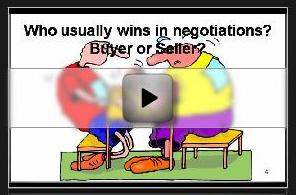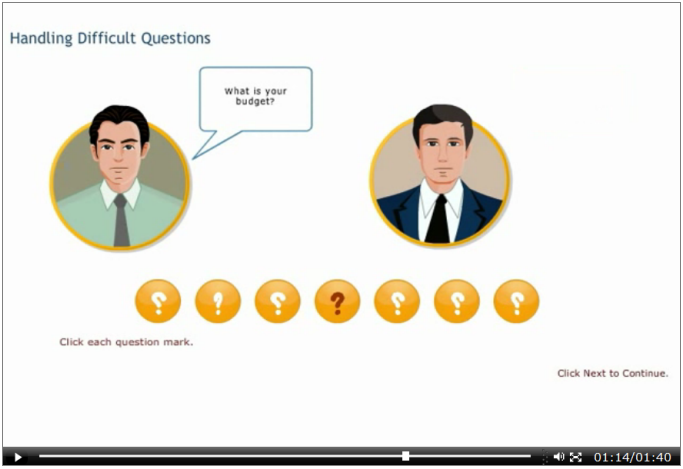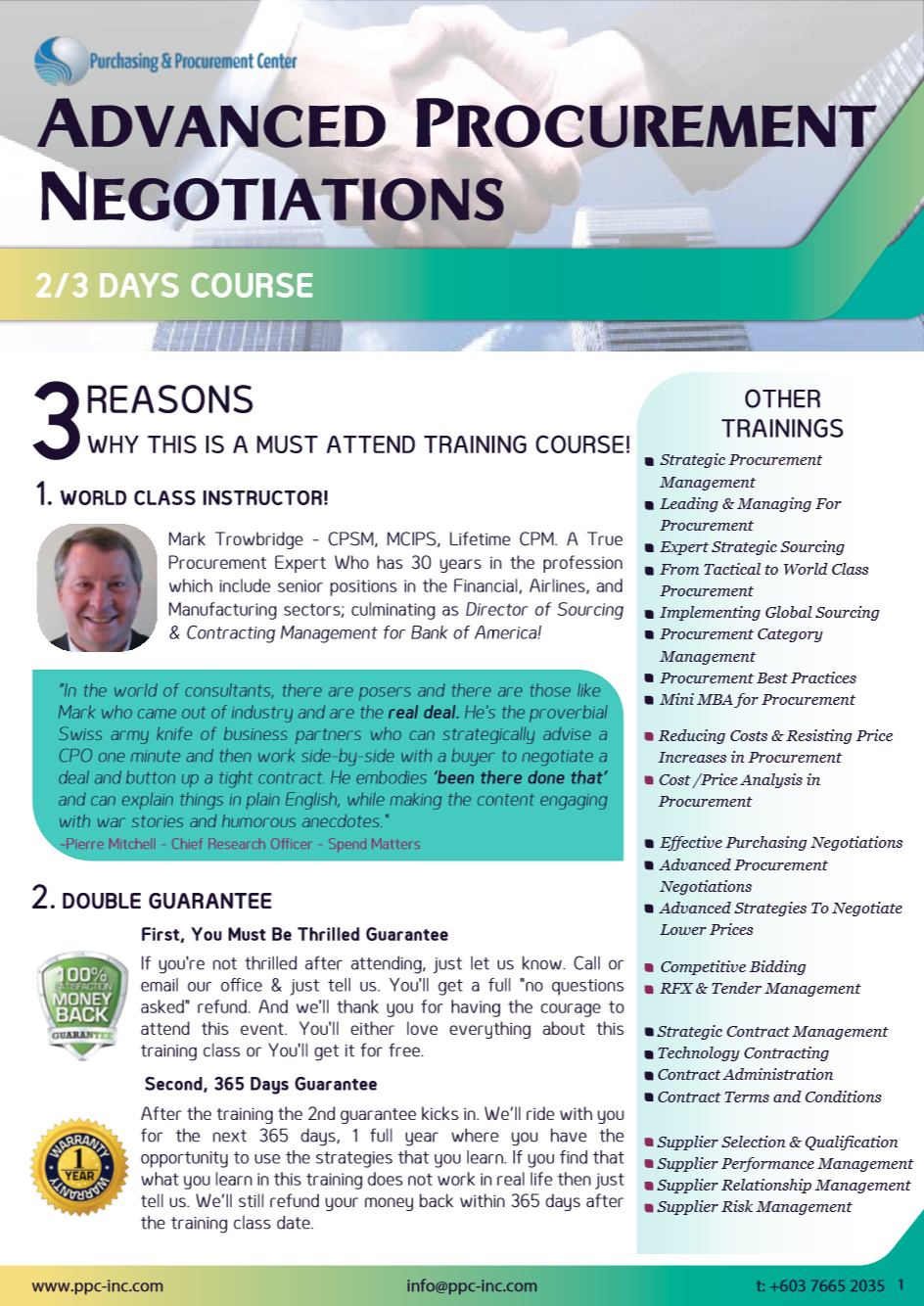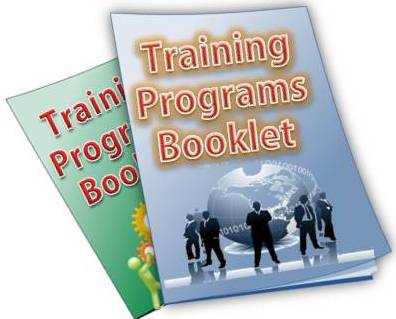Purchasing Negotiation 3 Requirements for Success in Supplier Negotiations
Purchasing Negotiation is part art part science. In this article you will learn what it takes to become a successful Procurement Negotiator, since you will know the most important factor before negotiating, who to negotiate with and the approach to take when negotiating with suppliers. But before that a quick answer to:
What is Purchasing Negotiation?
You can have a good academic discussion as to what is purchasing & procurement negotiation, but in a simple language it is the process where corporate buyers & sellers discuss/negotiate terms of a contract before concluding a deal & starting the contract management process.
This is both an analytical & psychological process. This analytical & psychological process is seen in the 3 requirements: The first 2 are analytical and the last one is psychological.
I. The Most Important Factor in Purchasing & Procurement Negotiation – Preparation!
If you have been led to believe that you must be the smartest man on planet Earth to be a successful negotiator, it is not so. Apart from having good skills as a negotiator, the most important factor is to Prepare.
Discover how to prepare for negotiations with this 7 step process, when you register for free for our Online Class/Webinar Successful Negotiations in Purchasing.
When negotiating on behalf of your company, you must first of all know what you are talking about. Some of the things you will be talking about are, Suppliers Price & Cost, Supplier Delivery Times & Costs, Supplier Service Response time. And so on. Now ask yourself this question: If you do not have good information about these items, how are you going to negotiate? Well, you can’t negotiate until & unless you have answers to these questions. So again when it comes to purchasing negotiations you will win before you actually start negotiations. Think about the following scenario. You are meeting the supplier and you have the following info.
- Supplier’s price is 10% above market price and he’s making 45% margin on your project (You discovered this by doing a price/cost analysis).
- The 45% margin is split as follows: 20% on goods sold, and 25% on the maintenance/service contract. (you also know this because you found the Producer Price Index for the goods delivered and services for that type of contract)
- The normal market margin for goods is 12% and for services is 18% - total of 30% as compared to 45% that your supplier wants to make.
While this is a simplified example, once you have this information, it is much simpler to negotiate with your supplier. If you have the best supplier you may be willing to pay a bit extra but not 50% more than the market (market is making 30% GP, as compared to 45% of your supplier).
II. Who are the Suppliers you Must Negotiate with?
This is also part of being analytical. If you have been a while in purchasing you know about ABC Analysis and how that helps classify suppliers/inventory into 3 categories (A, B, C) based on how much you spend with them. It is an accepted fact that any company will spend 80% of its money with 20% of suppliers, the next 15% of the money with the next 15% of suppliers and the final 5% of money with the 65% of the suppliers.
You don’t need an MBA to see that you will achieve the most procurement savings if you focus on negotiating with A Category suppliers, since that’s where 80% of your money is spent. However there are cases where you want to be careful in negotiating such as sole or single source procurement, where you have only 1 supplier for that item.
Also in case of capital equipment when you are acquiring a large item that costs lots of money, you need to spend time to prepare and negotiate, since these are cases where you can save substantially.
III. Approaches to Purchasing Negotiation with Suppliers!
This is where the psychological process comes in that you need to use persuasion, communication, verbal & non verbal skills.
Basically there are 2 types of objectives and approaches to purchasing negotiation. The first is the Confrontational or Lose – Lose approach where you don’t care whether the suppliers makes or loses money. You just bang on the supplier to give you 20% discount no matter what.
Lose - Lose Approach
We call this lose-lose because while you may get the discount you want in the short term, that will come at the expense of quality, delivery times etc. So at the end while the supplier looses in the discount given the buying organization loses more than the discount given.
Apparently that was one of the approaches during their contract negotiation process, taken by GM with its suppliers and after a while suppliers found themselves out of business (and GM soon thereafter – while there are other fundamental issues to GM’s bankruptcy this also contributed). Unfortunately it seems that this is the case with 80% or so of purchasing negotiation.
Win - Win Approach
The second approach is that of Win-Win Negotiations. For example, when you write a price negotiation letter to the supplier, you want to be fair to the supplier and ensure that he makes a reasonable profit but he delivers the products/services with the highest possible quality and on time.
While Win Win type is most talked about it happens in only about 20% of cases. Plus this is not easy, depending on who’s supervising the purchasing department and company culture.
To recap first of all you want to spend your time with worthy suppliers ie those who you spend lots of money with (A Category). Then you want to extensively prepare for your purchasing negotiation. Finally, when on the negotiation table work towards a Win-Win strategy that helps the supplier make a reasonable profit, and helps your company get the product/services at the required quality.
Return from Procurement and Purchasing Negotiation to Procurement Negotiations Strategies
Leave this article about Purchasing Negotiations & find out more info about Purchasing & Procurement Management & Strategies.





